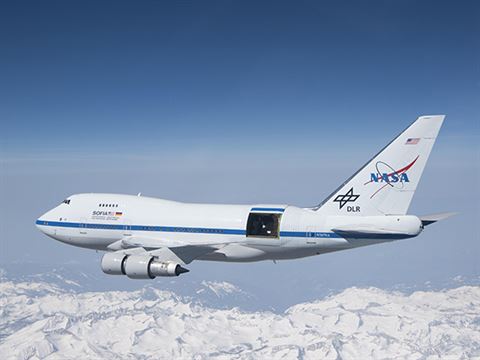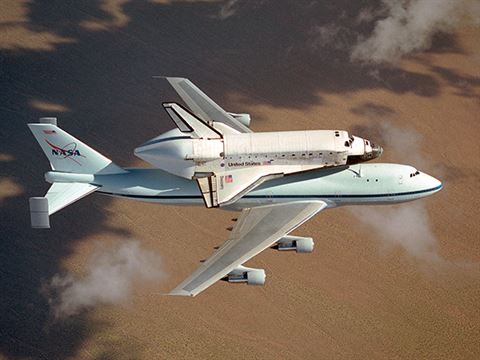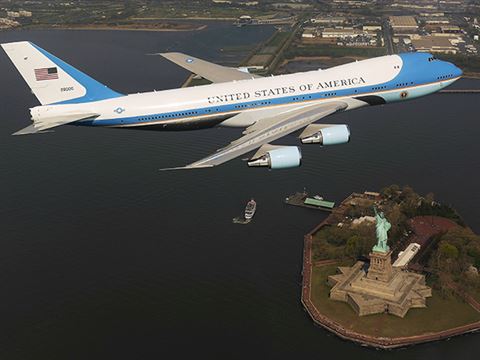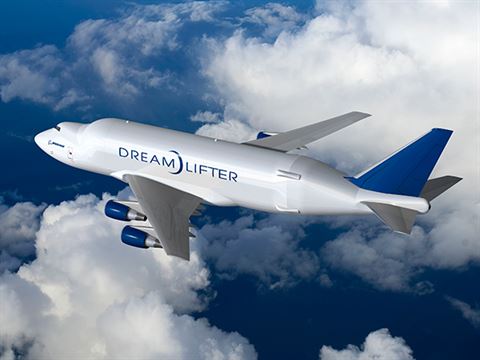THE FLIGHTDECK • March 2023
An ode to an icon: the Boeing 747
Few aircraft earn the right to a nickname, let alone two, but the legendary Boeing 747 – the original jumbo jet and Queen of the Skies – did just that. As the curtain comes down at Boeing’s Everett production line this year, The Club looks back on five decades of an aviation legend
1960s: Rising from the ashes
At the height of the Cold War, the US military was seeking a new heavy transport aircraft and so two titans of American aviation, Lockheed vs Boeing, went head-to-head. Lockheed would go on to win the contest and develop the C-5 Galaxy. Boeing lost the battle, but the war had barely begun.
Buoyed by a burgeoning demand for air travel, legendary Pan Am founder Juan Trippe demanded that if aircraft of such scale could be built for the military, then they could be built for him. Airlines across the world were quick to follow suit.
As for the battle of the heavyweights? Lockheed would go on to build 131 C-5s. Boeing built 1,574 jumbos.
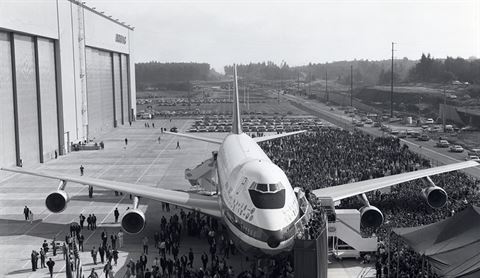
The ‘Jumbo’ prototype is rolled out of its purpose-built factory at Everett, Washington, on 30 September 1968
1970s: Giving the people what they want
Lead engineer of the successful Boeing 737 project, Joe Sutter would take the helm of the wildly ambitious 747 programme. Just 21 years after the death of Orville Wright, Sutter and his team were embarking on an aircraft whose wingspan was 62 per cent longer than the Wright Brothers’ first flight. Its construction necessitated the creation of the world’s largest factory, covering 98 acres.
The 747 programme heralded an era of giants
The market at that time was dominated by noisy, slow, turbo-prop aircraft and early generation jets, typified by the Boeing 707. The 747 programme would not only herald an era of giants, but also enhanced comfort – larger windows, more cabin space and greater range, removing the need for refuelling stops. The increase in seat capacity would reduce airfares and democratise travel for good.
As pilot and Director of our Flight Operations, Allister Bridger, remarks, “The world wanted to travel and the 747 gave this opportunity to millions.”
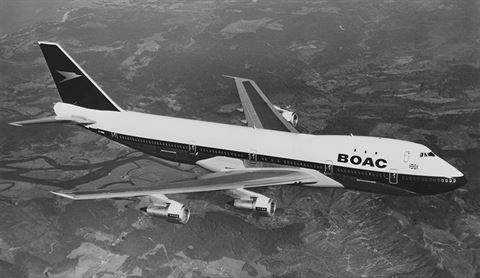
A BOAC Boeing 747 long-range wide-body four-engined commercial jet airliner flies above the UK in 1971 (Getty)
1980s and 90s: The ultimate face lift
The aircraft’s unique design with its characteristic hump housed a second deck, created so the entire nose section could be raised to load cargo. This meant moving the cockpit into the upper deck, literally giving pilots the hump and an elevated view some eight metres above the ground.
Flying high, Bridger remarks, “it was like sitting on top of a house as you touched down on the runway.” Indeed, it was a coveted novelty for passengers seated in the front of the First cabin on the lower deck to find themselves in front of the flight crew.
The plane quickly and deservedly earned its nickname: the Queen of the Skies. Powered by Rolls-Royce engines (favoured by British Airways), it defied its gargantuan proportions, handling with grace and agility; somehow, unquestionably, regal.
Designed at a time of shorter and rougher runways, the aircraft was capable of operating in demanding conditions. Even the infamously challenging approach to Hong Kong’s former Kai Tak airport, flanked by mountains and Victoria Harbour and demanding a steep turn and low descent over the heavily built-up Kowloon City, was no match for the giant. “It was a real adrenaline rush,” says Bridger, one of an august group of specially trained pilots qualified to perform such a tricky manoeuvre in and out of Kai Tak. “I was shaking as we taxied off the runway – and I had been used to some pretty exciting flying in fighter jets!”
“A British Airways 747 anywhere in the world was a piece of home”
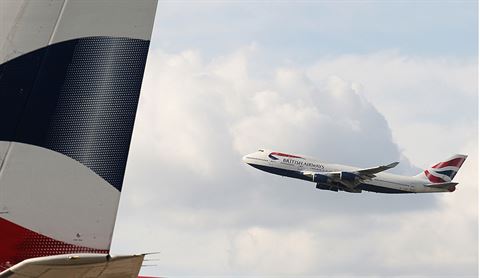
1990s: The weird and wonderful
British Airways passengers formed a strong bond with the jumbo which, over a long career, took millions across the globe and became as synonymous with the airline as the Flower Duet – something not lost on Bridger and his team. “A British Airways 747 anywhere in the world was a piece of home the minute you stepped on board.”
Passengers fell for the iconic looks and lure of the hallowed upper deck (which at times housed lounges and cocktail bars), but the 747s were not only for holidaymakers. Special iterations served with the US military as command-and-control aircraft known as ‘the doomsday planes’. Others have piggybacked NASA space shuttles, telescopes and most recently served as a launch platform for the UK space programme.
The most iconic 747 of them all, though, is the personal transport of the President of the United States, Air Force One – or, more accurately, a pair of modified 747s known as VC-25s.
2000s: Still breaking records
Our final order in the 1990s saw us become the largest operator of the passenger plane, with more than 100 in use during its time in service. It wasn’t long, however, until more modern and fuel-efficient types, such as the 787 Dreamliner and Airbus A350, signalled the twilight of the 747 era. But the Queen of the Skies still had a few aces to play. In 2020, one of our 747s set the world record for the fastest subsonic transatlantic crossing, which took just four hours and 56 minutes between London and New York, arriving nearly two hours earlier than scheduled. This means that we hold both the subsonic and supersonic records, with Concorde recording her fastest crossing at two hours and 52 minutes in 1996.
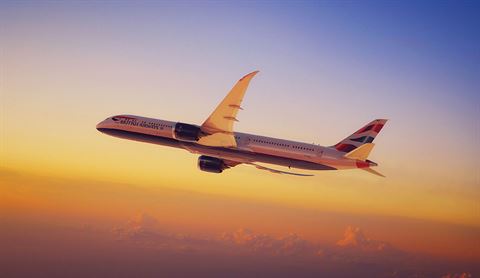
Increasingly fuel-efficient aircraft like the Boeing 787-10 signalled the twilight of the 747 era
2023: Into the sunset
When Concorde retired in 2003, the jumbo became the flagship aircraft of our fleet until 2020, when its own retirement was announced. Bridger was on the flight deck of the final flight that year: “It was a busy day with lots of media interest and a real buzz at Heathrow,” he recalls. “The emotion hit me as we lifted off for the final time. I thought, well that’s it – an end of an era.” Having bid our final jumbo goodbye, Bridger was also invited to see the final 747 off the production line at a special event held at Boeing’s headquarters in February this year. “It was incredible. Very much a celebration rather than a sad goodbye.”
The aircraft was a triumph of ambition and imagination, a blend of grace and power that, like all great design, led its fans to see beyond the sum of its parts to immortalise and anthropomorphise. So, the next time you’re in the departure lounge, raise a toast to 50 years of the Queen of the Skies.
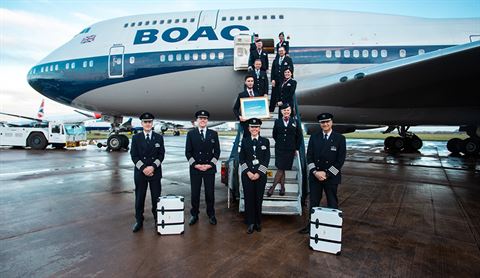
Allister Bridger (far left) with the very last British Airways 747 at Cardiff Airport in 2020
More 747 facts
- The plane holds the record for the largest number of passengers carried (1,088)
- It can carry up to 140 tonnes of cargo
- The 747-8 variant remains the longest aircraft in the world
- A British Airways 747 holds the speed record: a staggering (tailwind assisted) 825mph
- 747s are believed to have transported 3.5 billion passengers
- The upper deck of the 747-8 is the same size as a Boeing 737 fuselage
- British Airways operated the 747 from 1971-2020
- Cruise speed: 555mph
- Range: 7,730 miles
This article has been tagged BA, Technology
More from previous issues
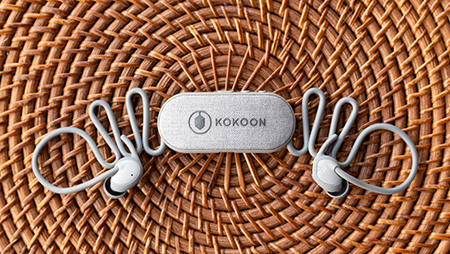
The best kit for some in-flight TLC
These six must-haves, available through our shopping portal, will have you feeling fresh and fabulous for touchdown

My Club: textiles artist Jag Sihra
The former British Airways design manager reveals how her travels and heritage inspire her line of fashion accessories

As seen on screen: five BAFTA-worthy destinations
To celebrate the 2023 BAFTAS, we roll out The Club’s red carpet for past award-winners whose films are set in and around our destinations
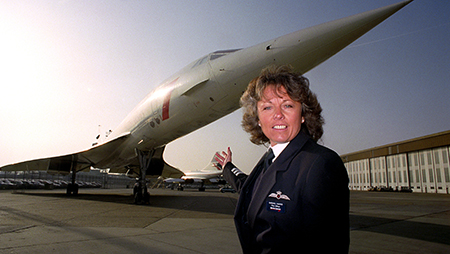
Five inspirational women in aviation (who you’ve probably never heard of)
The Club’s new flashback history series kicks off with these impressive pioneering women of British Airways

